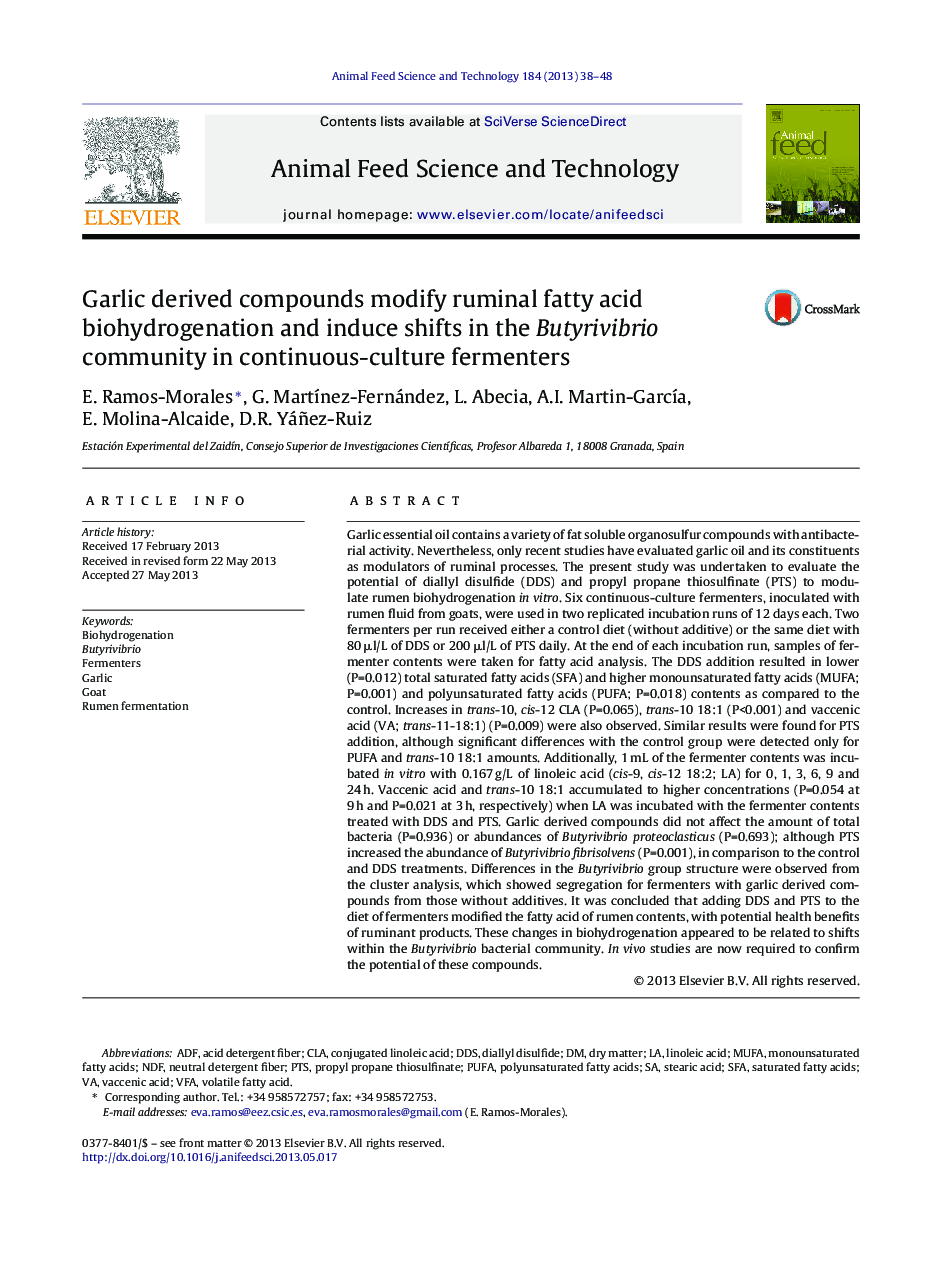| کد مقاله | کد نشریه | سال انتشار | مقاله انگلیسی | نسخه تمام متن |
|---|---|---|---|---|
| 2419718 | 1552403 | 2013 | 11 صفحه PDF | دانلود رایگان |

Garlic essential oil contains a variety of fat soluble organosulfur compounds with antibacterial activity. Nevertheless, only recent studies have evaluated garlic oil and its constituents as modulators of ruminal processes. The present study was undertaken to evaluate the potential of diallyl disulfide (DDS) and propyl propane thiosulfinate (PTS) to modulate rumen biohydrogenation in vitro. Six continuous-culture fermenters, inoculated with rumen fluid from goats, were used in two replicated incubation runs of 12 days each. Two fermenters per run received either a control diet (without additive) or the same diet with 80 μl/L of DDS or 200 μl/L of PTS daily. At the end of each incubation run, samples of fermenter contents were taken for fatty acid analysis. The DDS addition resulted in lower (P=0.012) total saturated fatty acids (SFA) and higher monounsaturated fatty acids (MUFA; P=0.001) and polyunsaturated fatty acids (PUFA; P=0.018) contents as compared to the control. Increases in trans-10, cis-12 CLA (P=0.065), trans-10 18:1 (P<0.001) and vaccenic acid (VA; trans-11-18:1) (P=0.009) were also observed. Similar results were found for PTS addition, although significant differences with the control group were detected only for PUFA and trans-10 18:1 amounts. Additionally, 1 mL of the fermenter contents was incubated in vitro with 0.167 g/L of linoleic acid (cis-9, cis-12 18:2; LA) for 0, 1, 3, 6, 9 and 24 h. Vaccenic acid and trans-10 18:1 accumulated to higher concentrations (P=0.054 at 9 h and P=0.021 at 3 h, respectively) when LA was incubated with the fermenter contents treated with DDS and PTS. Garlic derived compounds did not affect the amount of total bacteria (P=0.936) or abundances of Butyrivibrio proteoclasticus (P=0.693); although PTS increased the abundance of Butyrivibrio fibrisolvens (P=0.001), in comparison to the control and DDS treatments. Differences in the Butyrivibrio group structure were observed from the cluster analysis, which showed segregation for fermenters with garlic derived compounds from those without additives. It was concluded that adding DDS and PTS to the diet of fermenters modified the fatty acid of rumen contents, with potential health benefits of ruminant products. These changes in biohydrogenation appeared to be related to shifts within the Butyrivibrio bacterial community. In vivo studies are now required to confirm the potential of these compounds.
Journal: Animal Feed Science and Technology - Volume 184, Issues 1–4, 9 August 2013, Pages 38–48